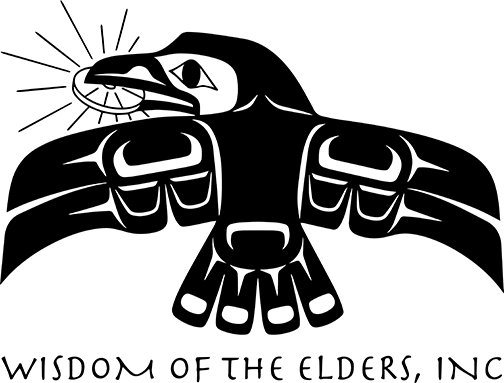The Buffalo
Arlie Neskahi:
The buffalo and Native people have experienced much change since Lewis and Clark first encountered them in 1804. Long immortalized in books, artwork and films, the horse and buffalo culture of the Plains tribes still capture the imagination of people today. For many years, the U.S. nickel memorialized both the Indian and the buffalo. Visitors to Yellowstone Park continue to feel a sense of awe when they catch their first glimpse of buffalo grazing in the meadow.
On today’s Sacred Landscapes, Judy Bluehorse Skelton talks about the changing landscapes that are bringing Native people and the buffalo back to the Great Plains.
Judy Bluehorse Skelton:
Two centuries ago, buffalo filled the Great Plains for as far as the eye could see. Lewis and Clark noted, “…this scenery, already rich, pleasing, and beautiful was still further heightened by immense herds of buffalo.” The buffalo numbered in the millions and were the main stable of the tribes of the region.
As the horse entered their culture in the 18 th century, the Gros Ventres, like other plains tribes, were dramatically affected. They became more and more dependent on the Buffalo fur sustenance, following the migrating herds across the plains rather than staying put to raise crops. A sacred gift from the Creator, this powerful animal was and is revered today. Ceremonies and other rituals would be held to prepare the hunters for a successful hunt, and to honor the animals who would provide so much. The whole village prepared for the hunters’ return, and offered thanks to the animals that had given their lives so that the people might live.
Photos below courtesy of a2zcds.
Click to enlarge.
www.a2zcds.com
Music:
Medicine Dance
Burning Sky
Spirits in the Wind
Canyon Records
Over the next hundred years, the buffalo were brought to the edge of extinction as western expansion brought a flood of settlers onto the plains. U.S. government policy to slaughter buffalo made room for farming and cattle ranching. Eliminating the buffalo would force Indians to abandon their traditional lifestyle and assimilate into the farming culture.
It was open-season on buffalo. In a 2-year period, between 1881 to 1883, called the buffalo disaster, the northern herd of buffalo was almost exterminated as an estimated 320,000 hides were shipped out of the country. With their buffalo gone, traditional customs threatened, and government rations frequently withheld, sickness and suffering among native people in the northern Great Plains became widespread. By 1883, an estimated population of 70 million wild buffalo that once reached from Alaska to northern Mexico, was cut to just 350 animals.
Music:
Medicine Dance
Burning Sky
Spirits in the Wind
Canyon Records
Now, a hundred and twenty years later, change is in the air. From the Black Hills of the Dakotas to the tall-grasses of Oklahoma, a renewal of the buffalo, and Native people, is taking place. According to the census, the non-native population has been decreasing for several decades. At the same time, there are more native people and buffalo on the plains than at any time since the 1870’s.
The late Patricia Locke is a Lakota and Chippewa elder and a MacArthur Foundation fellow. She said, “What’s happening is really quite astonishing. It’s like an evacuation one way, and a homecoming in the other.”

George Catlin American, 1796 - 1872 After the Buffalo Chase - Sioux, 1861/1869 oil on card mounted on paperboard, 47.6 x 63.8 cm (18 3/4 x 25 1/8 in.) Paul Mellon Collection 1965.16.11
In publicly owned prairie land, native grasses and wildflowers have returned now that the land is no longer plowed for farming. Much of this land will never be plowed again thanks to a measure that designates nearly one third of the nation’s 3.7 million acres of national grassland as road-less areas.
Species like prairie dogs, burrowing owls and buffalo have made big comebacks. Buffalo have recovered to nearly 300,000 today. More than thirty tribes, including the Gros Ventre and Assiniboine, are managing large herds on land where, unlike cattle, buffalo need no help to flourish. Sixteen of the 34 accredited tribal colleges offer courses in buffalo management.
Gros Ventre tribal leader, Ben Speakthunder, says their herd benefits the tribe by providing buffalo to individual families when they are hosts for the feed at a Sundance or other large cultural event. Gros Ventre and Assiniboine tribes share a reservation in north central Montana called Fort Belknap. At the Fort Belknap Tribal College, students have an opportunity to not only learn about herd management, but to reconnect with the buffalo and the culture of their ancestors.
Music:
Medicine Dance
Burning Sky
Spirits in the Wind
Canyon Records

George Catlin American, 1796 - 1872 Prairie Dog Village, 1861/1869 oil on card mounted on paperboard 46.9 x 63.4 cm (18 1/2 x 25 in.) Paul Mellon Collection 1965.16.185
The return of the buffalo was foretold by native people 150 years ago. Today, the buffalo continues to inspire, nourish and serve as a central figure to the restoration and renewal of Native Americans everywhere. Osadadu.
Neskahi:
Educator, writer and herbalist Judy Bluehorse Skelton is Nez Perce, Chickasaw and Cherokee. She lives and works in Portland, Oregon.



